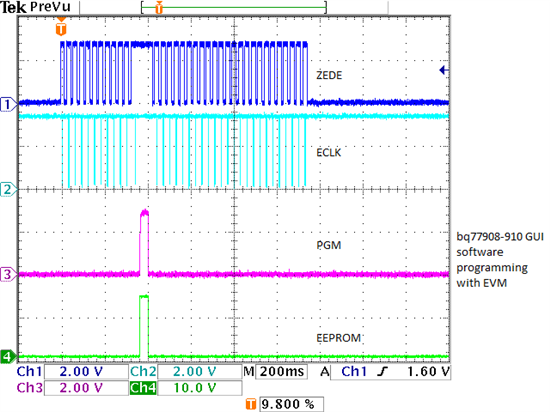I am attempting to program a BQ77908A using a USB-TO-GPIO interface with version 2.0.19 firmware, but can find no reference in the documentation defining the format required for the configuration file. I have sucessfully installed the BQ77910-BQ77908 Programmer software and the device connection is made, but when I have attempted to load a file with the configuration data I get exceptions or file errors. Please provide an example of a properly formatted configuration file. Following is one of my attempts assuming that a semicolon would terminate the input info (all data following the semicolon seen as comments???), but it does not work.
0xcc; 0x1 – SYS_CFG - 4-series cell configuration, thermal detection in all modes, recover OT fault requires load removal, recover OCD/SCD with load removal
0x26; 0x2 – OV_CFG - 1Over-voltage trip voltage of 3.75V
0X52; 0x3 – OV_CFG2 - Do not use TS for external charger control, over-voltage hysteresis of 50V and over-voltage trip delay of 1 second
0x06; 0x4 – UV_CFG1 - Use hysteresis (see below) and trigger under-voltage level at 2 volts
0xc4; 0x5 – UV_CFG2 - Load removal required upon UV event, shutdown after 8 seconds, hysteresis of 0.4V, under-voltage delay of 8 seconds
0x04; 0x6 – OCD_DELAY - Over-current delay is 100mS
0X0f; 0x7 – SCD_DELAY - Use lower range for current limits and fast delay setting, trip in 960uS for over-current discharge event
0xba; 0x8 – OCD_SCD_TRIP - Short circuit discharge trip at 30A and over-current discharge trip at 15A
0xf7; 0x9 - SCC-CFG - Over-Current charge duration of 960uS at 45mV (9 amps)
0xed; 0xa – CELL_BAL_CFG - Start balancing at 2.6V (cell voltage) during charge for a maximum of 4 hours.


